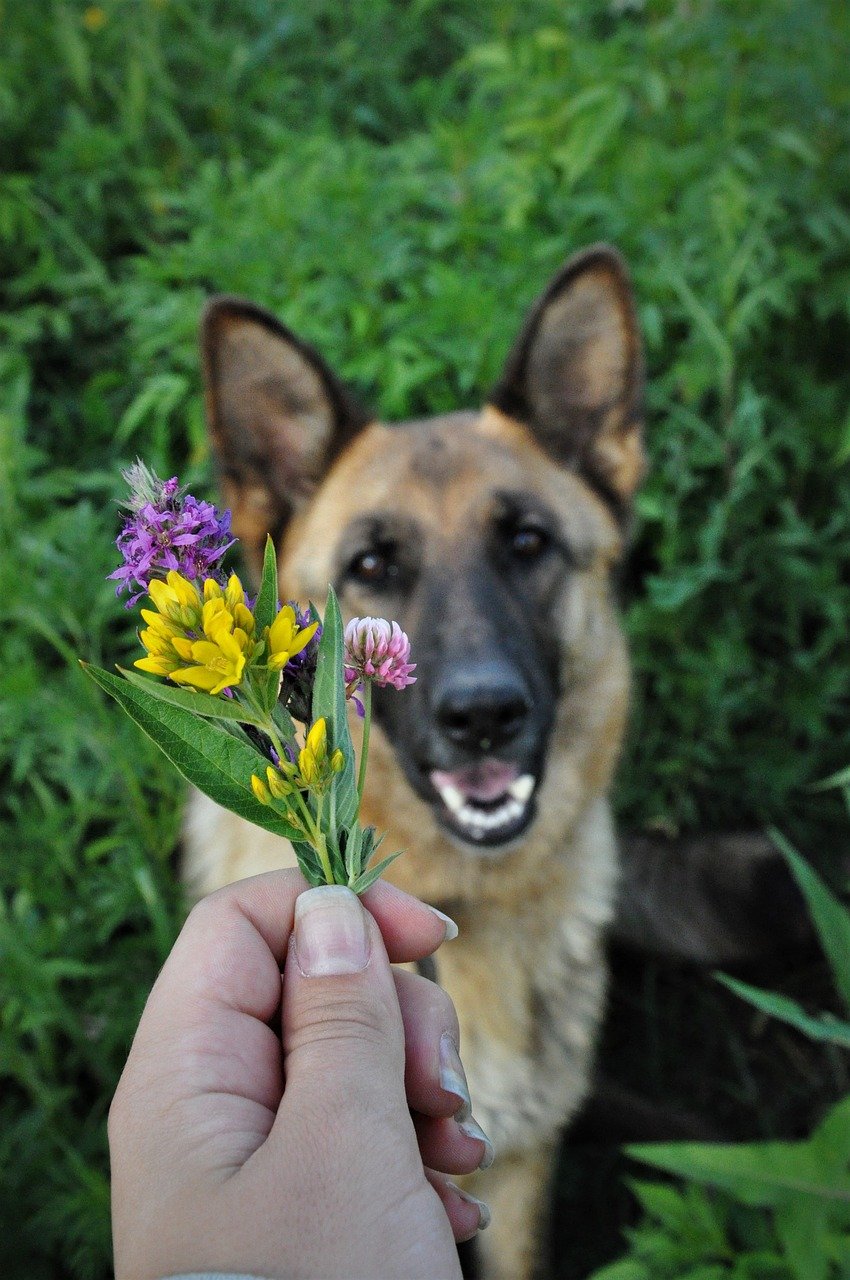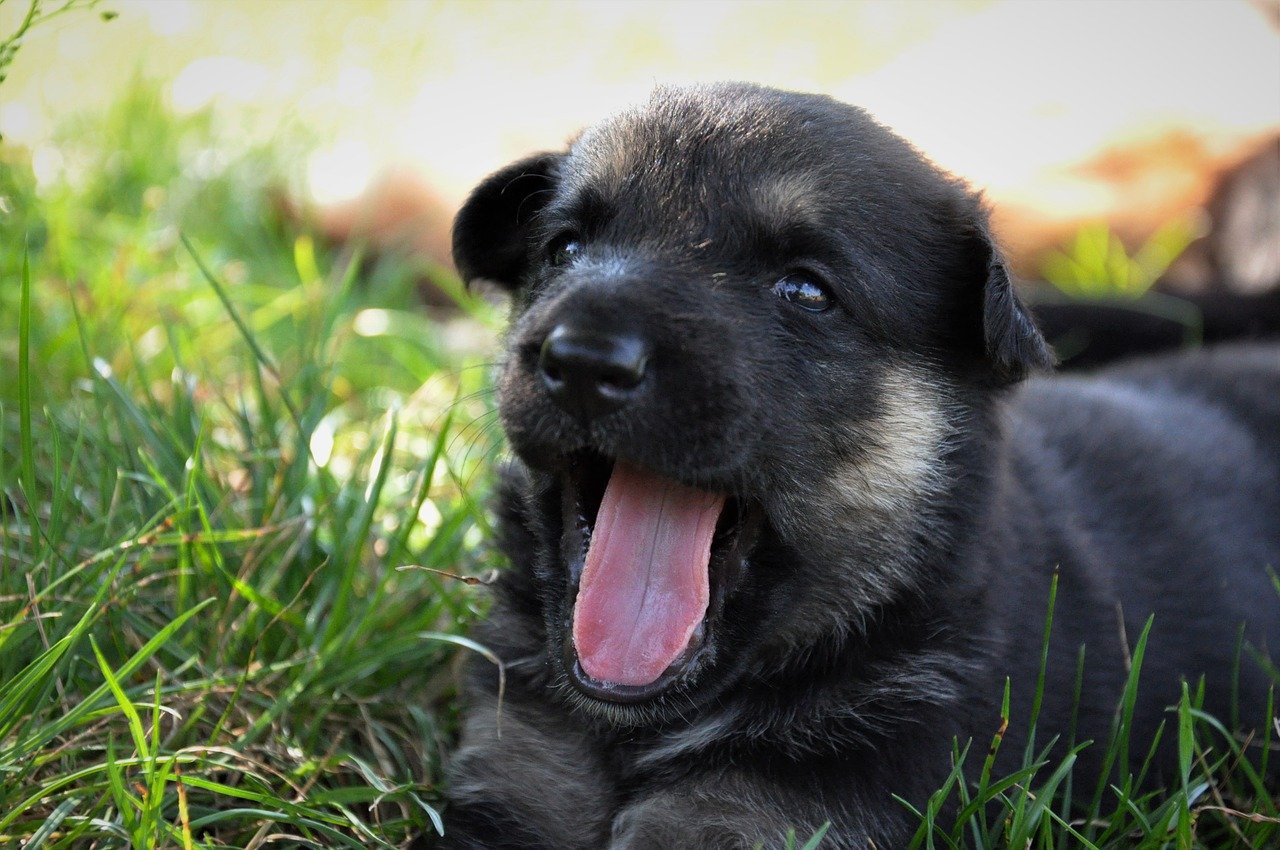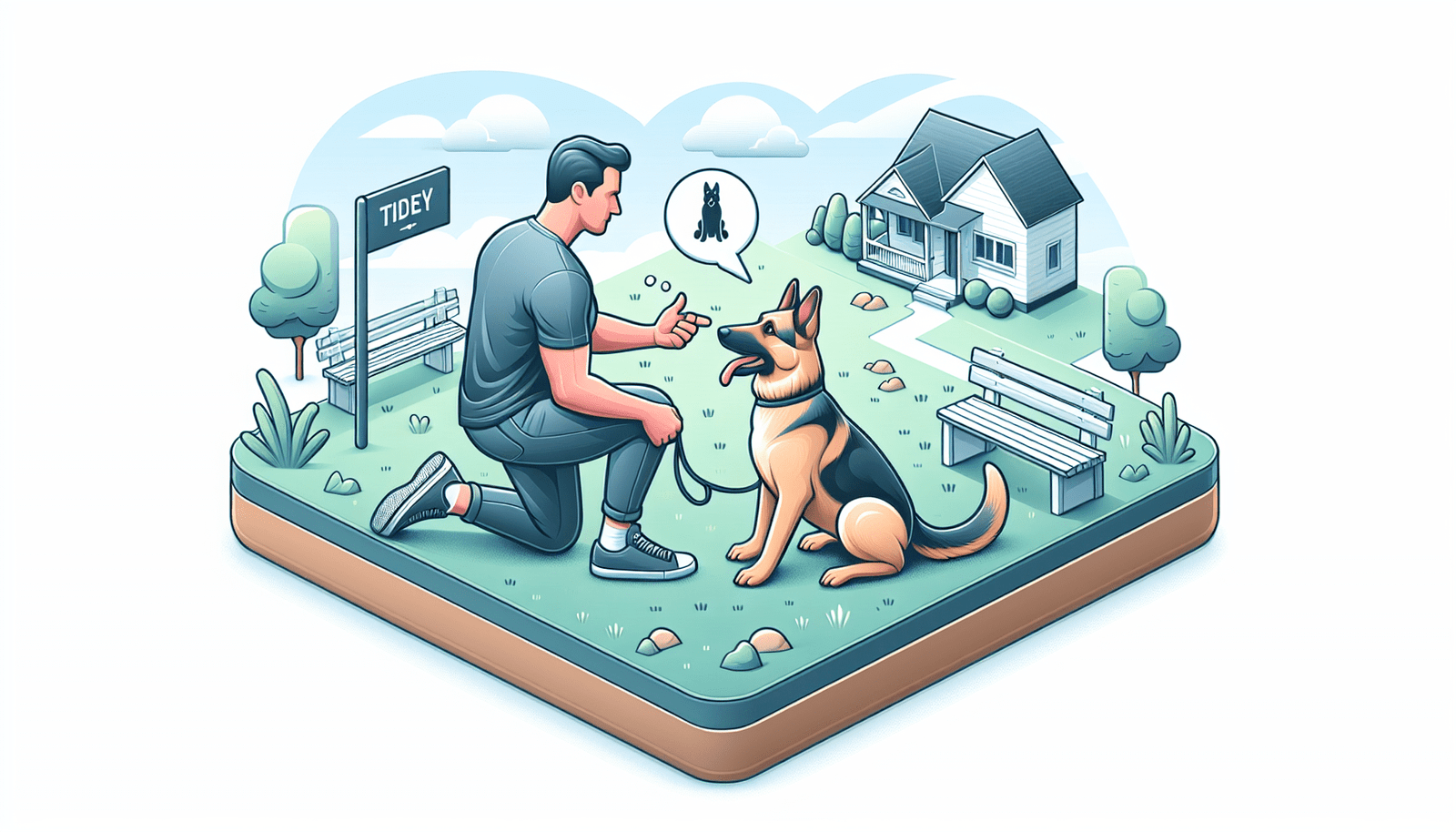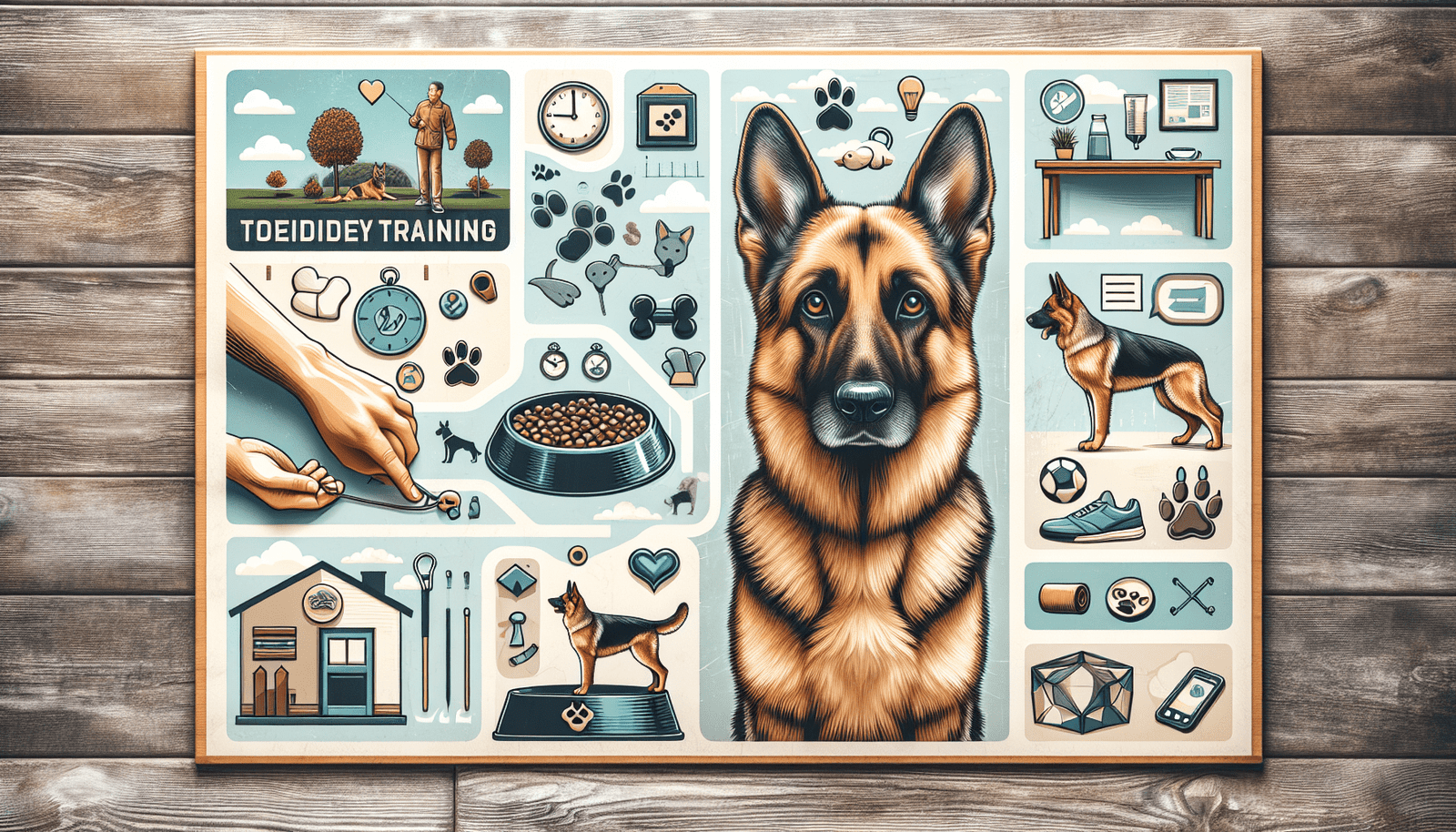If you’ve recently welcomed a German Shepherd into your family, you might be wondering how to seamlessly integrate obedience training into your daily routines. Training your German Shepherd is not only crucial for their well-being and safety but also for building a strong bond with them. Fortunately, there are simple and effective ways to incorporate obedience training into your everyday activities, allowing you to nurture your furry companion’s obedience skills while going about your daily tasks. In this article, we’ll explore practical tips and strategies that will help you effortlessly incorporate obedience training into your German Shepherd’s daily routine.

This image is property of pixabay.com.
Understand the Importance of Obedience Training
Obedience training is crucial for your German Shepherd’s overall well-being and your relationship with them. By establishing boundaries and rules, you provide a clear structure that helps your dog understand what is expected of them. This establishes a sense of security and reduces anxiety by giving them a sense of purpose and direction. Furthermore, obedience training builds trust and respect between you and your German Shepherd, strengthening your bond and creating a harmonious household. It also ensures the safety of your dog and those around them by teaching them important commands like “come” and “stay.” Lastly, obedience training offers mental and physical stimulation for your German Shepherd, keeping them engaged and preventing behavioral issues that can arise from boredom.
Establishing Boundaries and Rules
Setting boundaries and rules is an essential part of obedience training. Clearly defining what behaviors are allowed and what is not acceptable helps your German Shepherd understand their role in the family and promotes good behavior. For example, teaching your dog to wait at the door instead of barging through, or not jumping on people, establishes a respectful and well-mannered attitude. Consistency is key when establishing boundaries, so make sure everyone in your household follows the same rules and enforces them consistently.
Building Trust and Respect
Obedience training builds trust and respect between you and your German Shepherd. By establishing yourself as a fair and reliable leader, you create a secure environment for your dog to thrive in. Consistently reinforcing the training commands and rewarding good behavior helps your German Shepherd understand that they can trust and rely on you. It is important to use positive reinforcement techniques, such as treats and praise, to foster a positive and respectful relationship with your dog. Avoid using harsh correction or punishment, as this can erode trust and create fear or aggression.
Ensuring Safety
One of the most important aspects of obedience training is ensuring the safety of your German Shepherd and those around them. Commands like “come,” “stay,” and “leave it” can be life-saving in certain situations. Teaching your dog to come when called, especially in distracting environments, can prevent accidents and potential dangers. “Stay” is useful for keeping your German Shepherd safe and in control in various situations, such as crossing a road or when meeting new people or animals. “Leave it” is vital for preventing your dog from consuming something harmful or engaging with something they shouldn’t.
Promoting Mental and Physical Stimulation
Obedience training is not just about following commands; it also provides mental and physical stimulation for your German Shepherd. Dogs are intelligent creatures that require both mental and physical exercise to stay happy and healthy. Incorporating training sessions into your daily routine ensures that your dog receives the mental stimulation they need. Learning new commands and tricks challenges their minds and keeps them engaged. Additionally, practicing obedience during daily activities such as walks, mealtime, grooming, and playtime provides an opportunity for physical exercise, reinforcing the bond between you and your German Shepherd.
Identify Key Training Commands
To effectively train your German Shepherd, it is important to identify and teach them key training commands. These commands serve as the foundation for their obedience training and will be used throughout their life. Here are some essential training commands to focus on:
Sit
“Sit” is one of the most basic and important commands to teach your German Shepherd. It is useful in various situations, such as before crossing a road or when meeting new people or animals. Start by holding a treat near your dog’s nose, then move your hand up, causing their head to follow the treat and their bottom to lower. Once they are in a sitting position, say the word “sit” and offer them the treat as a reward. Repeat this command consistently and gradually reduce the need for a treat every time.
Stay
The command “stay” is essential for keeping your German Shepherd safe and in control. It is important to teach your dog to remain in one spot until you give them the signal to move. Begin by commanding your dog to sit, then extend your hand in front of their face, palm towards them, and say “stay” while taking a step back. If your dog stays in place, praise them and offer a treat. Gradually increase the time and distance as your dog becomes more comfortable with staying.
Down
“Down” is another crucial command that teaches your German Shepherd to lie down on command. Start with your dog in a sitting position, then hold a treat in your hand, close to their nose. Slowly lower your hand towards the ground, causing your dog to follow the treat and lie down. As they lie down, say the word “down” and reward them with a treat. Practice this command regularly, gradually phasing out the need for a treat every time.
Come
The command “come” is essential for your dog’s safety and allows you to call them back to you in any situation. Begin in a controlled environment, such as your home or backyard, and call your dog’s name followed by the command “come.” Encourage them with a happy and inviting tone of voice. When they approach, reward them with a treat and praise. Gradually increase the distance and practice in different environments, using positive reinforcement to reinforce the command.
Leave It
“Leave it” is a vital command that prevents your German Shepherd from picking up or engaging with something they shouldn’t. Begin by holding a treat in your closed hand, showing it to your dog. Say the command “leave it” and close your hand, preventing your dog from accessing the treat. Wait for them to stop trying to get to the treat and then reward them with a different treat that you offer from your other hand. Practice this command regularly using various objects, gradually increasing the difficulty level.
Heel
The “heel” command teaches your German Shepherd to walk calmly by your side without pulling on the leash. Start by walking with your dog on a loose leash at your side, then say the command “heel” and reward them with treats for staying by your side. If your dog starts to pull or stray away, use a verbal cue, such as “no” or “uh-uh,” and change direction to regain their focus on you. Consistency and positive reinforcement are key to mastering this command.
Off
The “off” command is useful for discouraging jumping up on people or furniture. When your German Shepherd jumps up, firmly say “off” and gently push them down or backward if necessary. Once they have all four paws on the ground, reward them and provide positive reinforcement. Consistency is important in teaching your dog that jumping up is not acceptable behavior.
Drop It
Teaching your German Shepherd to “drop it” is crucial for avoiding potential hazards. Begin by offering your dog a toy or item that is safe for them to hold in their mouth. While they have the item, command them to “drop it” and show them a treat. As they release the object, reward them with the treat and praise. Repeat this command regularly, gradually introducing more valuable or appealing items to practice dropping.
Wait
The “wait” command is used to teach your German Shepherd to pause and remain in one spot until given the release cue. Start by asking your dog to sit or stand in a specific spot, then extend your hand, palm facing them, and say “wait.” As long as your dog remains in place, praise them and offer treats. Gradually increase the duration of the wait, incorporating it into various situations like waiting at the door or before mealtime.
Place
The “place” command teaches your German Shepherd to go to a specific spot and remain there until released. Choose a designated spot, such as a mat or dog bed, and encourage your dog to go there using a verbal cue, such as “place” or “go to your spot.” Once they are on the spot, reward them with treats and praise. Use regular practice sessions to reinforce the “place” command, gradually increasing the duration of their stay on the spot.

This image is property of pixabay.com.
Create a Training Schedule
Establishing a training schedule is essential for consistent and effective obedience training. Here are some tips for creating a successful training schedule:
Determine Training Time
Find a time during the day when you and your German Shepherd are both alert and focused. Avoid training sessions when either of you is tired, hungry, or distracted. Consistency in training time will help your dog recognize and anticipate their training sessions, making them more receptive to learning.
Allocate Short Training Sessions
Keep training sessions short, around 10-15 minutes, to maintain your dog’s focus and prevent them from becoming bored or overwhelmed. Shorter sessions also allow for more frequent practice throughout the day, which reinforces the training commands and helps your German Shepherd retain what they have learned.
Consistency is Key
Consistency is key in obedience training. Regular practice, even for short durations, is more effective than sporadic and long training sessions. Aim for at least one training session per day, and gradually increase the frequency as your dog progresses. Consistency in your training methods and expectations will help your German Shepherd understand what is expected of them.
Consider Your Dog’s Energy Level
Take into account your German Shepherd’s energy level when scheduling training sessions. Generally, dogs have more energy in the morning and early evening. Plan your training sessions around these periods to ensure your dog is alert and focused. Avoid training immediately after a meal or intense exercise, as your dog may be too tired or distracted to learn effectively.
Use Positive Reinforcement
Positive reinforcement is a powerful training technique that rewards your German Shepherd for good behavior. Use treats, praise, and playtime as rewards during training sessions. This positive association motivates your dog to repeat the desired behavior. Always end each training session on a positive note, even if your dog is struggling with a command. This encourages them and helps maintain their enthusiasm for future training.
Incorporate Training Into Daily Routines
Integrating obedience training into your daily routines can help reinforce your German Shepherd’s training and create a well-behaved dog. Here are some ways to incorporate training into your daily activities:
Morning Routine
Start your day by incorporating a short training session into your morning routine. Practice basic commands like “sit” and “stay” while preparing breakfast or getting ready for the day. This helps set a positive tone for the day and provides mental stimulation for your dog.
Mealtime
Mealtime offers an excellent opportunity to reinforce training commands. Before placing your dog’s food bowl down, ask them to sit or wait patiently. This reinforces their obedience and helps them understand that good behavior is rewarded. You can also practice the “leave it” command by placing a treat on the ground and instructing your dog to ignore it until given permission to eat.
Walks and Exercise
Incorporate training commands into your daily walks and exercise routines. Practice “heel” to discourage pulling on the leash and reinforce that walking by your side is the expected behavior. Use “stay” when encountering distractions or when waiting to cross the road. Regularly reinforcing training commands on walks helps keep your German Shepherd focused and responsive to your cues.
Playtime
Turn playtime into a training session by incorporating commands like “sit,” “down,” “stay,” and “come.” Use playtime as an opportunity to reinforce good behavior and engage your dog’s mind. For example, ask your dog to sit before throwing a toy or command them to “drop it” when they bring a toy back to you.
Grooming and Handling Sessions
Incorporate training commands during grooming and handling sessions to make them more pleasant for your German Shepherd. Ask your dog to “sit” or “stay” while you brush their coat or clean their ears. These commands reinforce calm behavior and make it easier for you to groom them effectively.
Bedtime Routine
End the day with a brief training session as part of your bedtime routine. This reinforces obedience and provides mental stimulation before your German Shepherd settles down for the night. Practice commands like “place” or “stay” as you prepare their sleeping area, creating a calm and relaxed atmosphere.

Utilize Training Tools and Techniques
To enhance the effectiveness of obedience training, it is essential to utilize various training tools and techniques. Here are some tools and techniques that can aid in your German Shepherd’s training:
Leash and Collar
A properly fitted leash and collar are essential tools for controlling your German Shepherd during training sessions and daily walks. Opt for a sturdy leash and a well-fitted collar that does not cause discomfort or restrict movement. Remember to use the leash and collar responsibly and avoid excessive pulling or corrections.
Clicker Training
Clicker training is a popular and effective method that uses a small clicker device to mark desired behavior. The clicker sound serves as a signal that the dog has performed the correct behavior and will be rewarded. Pair the clicker sound with treats or rewards to reinforce positive behavior and strengthen the association between the clicker sound and the reward.
Treats and Rewards
Treats and rewards are powerful motivators during obedience training. Use small, soft, and easily consumable treats that your German Shepherd loves. Reward your dog immediately after they successfully perform a command to reinforce the desired behavior. Additionally, praise, petting, and playtime can also be used as rewards and are effective in reinforcing good behavior.
Verbal Cues and Hand Signals
Pairing verbal cues with hand signals helps your German Shepherd understand and respond to commands more effectively. Use consistent and clear verbal cues, such as “sit,” “down,” and “stay,” accompanied by a corresponding hand signal. Combining verbal and visual cues makes it easier for your dog to understand and respond appropriately.
Training Aids (e.g., Target sticks, puzzle toys)
Training aids can add variety and engagement to your German Shepherd’s training sessions. Target sticks are useful for teaching commands like “touch” or “target,” where your dog learns to touch their nose to the end of the stick. Puzzle toys provide mental stimulation and challenge your dog’s problem-solving skills. These tools can be used to reinforce training commands and prevent your dog from becoming bored with repetitive exercises.
Socialization Opportunities
Socialization is a crucial aspect of obedience training, as it helps your German Shepherd become comfortable and well-behaved in various environments and around different people and animals. Here are some socialization opportunities to consider:
Visiting Dog Parks
Dog parks provide a controlled and safe environment for your German Shepherd to interact with other dogs. It is important to ensure that your dog is well-socialized and responsive to commands before visiting a dog park. Supervise your dog’s interactions and use training commands like “come” and “stay” to maintain control and ensure a positive experience.
Arranging Playdates
Arrange playdates with well-behaved dogs that your German Shepherd is familiar with. This allows them to interact in a more controlled and familiar environment. Observe their interactions and intervene if necessary to ensure that the playdate remains positive and safe for both dogs.
Attending Training Classes or Workshops
Enroll your German Shepherd in training classes or workshops that focus on obedience and socialization. These classes provide structured environments where your dog can learn from professional trainers and interact with other dogs. It also allows you to work on specific training goals and challenges with expert guidance.
Taking your German Shepherd to Public Places
Expose your German Shepherd to different public places, such as pet-friendly stores or cafes, to help them become comfortable and well-behaved in various environments. Use training commands like “heel” and “stay” to ensure their focus and adherence to your instructions. Gradually expose them to busier and more challenging locations as their confidence and obedience improve.
Introducing your Dog to Various Environments and People
Expose your German Shepherd to various environments and people to promote confidence and sociability. Introduce them to different surfaces, sounds, and sights in a gradual and controlled manner. Encourage positive interactions with strangers by rewarding good behavior and providing plenty of praise.

Turn Daily Activities Into Training Opportunities
Make use of daily activities to incorporate obedience training naturally into your German Shepherd’s routine. Here are some examples:
Using Training Commands During Walks
During walks, practice commands like “sit,” “stay,” and “heel” to reinforce obedience and control. Use “sit” and “stay” when waiting to cross the road or when encountering distractions like other dogs or unfamiliar people. Reinforce good behavior by rewarding your German Shepherd with treats or praise during or after the walk.
Practicing Obedience During Mealtime
Include training commands during mealtime to reinforce obedience and control around food. Use “wait” or “stay” before placing the food bowl down. This teaches your German Shepherd to have self-control and patience. Reward them for staying in the designated spot until given the release cue, like “okay” or “eat.”
Incorporating Commands During Playtime
Turn playtime into a training session by incorporating commands like “sit,” “down,” and “drop it.” Asking your German Shepherd to perform these commands during playtime reinforces obedience and can prevent unwanted behaviors like rough play or possessiveness over toys.
Training in Different Rooms of the House
Practice training commands in different rooms of your house to reinforce obedience in various settings. This helps your German Shepherd generalize the commands and understand that they apply in any environment. Move from room to room and practice commands like “sit,” “stay,” and “down” to keep your dog engaged and responsive.
Integrating Training During Car Rides
Use car rides as an opportunity to reinforce training commands and teach your German Shepherd good car manners. Practice “stay” or “lie down” commands while driving to ensure their safety and comfort. Start with short car trips and gradually increase the duration to help your dog become more accustomed to car rides.
Maintain a Positive Training Environment
Maintaining a positive training environment is crucial for effective obedience training with your German Shepherd. Here are some tips to create a positive and nurturing training environment:
Patience and Persistence
Obedience training takes time, patience, and persistence. Understand that learning new commands and behaviors can be challenging for your German Shepherd. Remain calm, patient, and encouraging throughout the training process. Celebrate small accomplishments and avoid getting frustrated or becoming too forceful. Consistency and positive reinforcement will yield better results in the long run.
Avoid Negative Reinforcement
Positive reinforcement is the foundation of effective obedience training. Avoid using negative reinforcement or punishment-based techniques, as they create fear, stress, and potentially aggressive behavior in your German Shepherd. Focus on rewarding good behavior and redirecting unwanted behavior to encourage desirable responses.
Avoid Punishment
Punishment, such as hitting, yelling, or physical force, should never be used during obedience training. It damages the trust and bond between you and your German Shepherd and can lead to behavioral issues. Instead, focus on positive reinforcement and redirecting unwanted behavior to more appropriate alternatives.
Avoid Training When Frustrated
Training your German Shepherd when you are frustrated or in a negative mood can have adverse effects on their training. Dogs can sense human emotions, and your frustration or impatience can cause confusion or anxiety in your dog. Take a break if needed, regroup, and approach the training session with a calm and positive mindset.
Provide Mental and Physical Breaks
Training sessions should be engaging but not overwhelming for your German Shepherd. Provide mental and physical breaks between sessions to prevent burnout and keep the training experience enjoyable. Allow your dog to play, rest, and explore their surroundings to maintain their overall well-being.
Seek Expert Advice
Seeking expert advice can be beneficial when it comes to obedience training with your German Shepherd. Professional dog trainers or behaviorists can provide valuable guidance and address specific training concerns. Here are some avenues to seek expert advice:
Consulting Professional Dog Trainers or Behaviorists
Professional dog trainers or behaviorists have extensive knowledge and experience in training dogs of various breeds and temperaments. They can provide individualized training plans and strategies specific to your German Shepherd’s needs. Consulting with a professional can greatly enhance your training journey and help address any challenges you may encounter.
Joining Online Dog Training Communities
Online dog training communities offer a wealth of resources, support, and advice from experienced dog trainers and fellow dog owners. Joining these communities allows you to connect with like-minded individuals and gain valuable insights into obedience training and problem-solving. Participate in discussions, ask questions, and share your experiences to make the most of these online communities.
Attending Dog Training Seminars
Dog training seminars provide opportunities to learn from experts in the field and expand your knowledge on obedience training. Seminars often cover various topics, techniques, and dog behavior insights. Attending these seminars can give you a deeper understanding of training principles and provide practical tips to improve your training sessions.
Reading Books and Watching Educational Videos
Educational resources, such as books and videos, are valuable tools for learning about obedience training. There are numerous books and online videos available that cover a wide range of training topics and techniques. Look for reputable and well-reviewed sources to ensure you are receiving accurate and reliable information.
Track Progress and Adjust Training Methods
Tracking your German Shepherd’s progress and adjusting your training methods as needed is essential for a successful training journey. Here are some steps to track progress and adapt your training techniques:
Monitoring Improvement in Obedience
Keep track of your German Shepherd’s progress by noting their ability to perform commands and exhibit desired behavior. Keep a training journal and record the commands your dog has mastered and any areas that require further work. This allows you to see improvements over time and identify any patterns or challenges that need specific attention.
Identifying Areas of Difficulty
Identify any areas where your German Shepherd may be struggling or showing resistance. It could be a specific command or a certain behavior that needs improvement. Take note of these challenges and address them with targeted training techniques or seek guidance from a professional trainer or behaviorist.
Modifying Training Techniques as Needed
Training techniques may need to be modified based on your German Shepherd’s progress and unique personality. Some dogs respond better to certain approaches, while others require different methods. Be open to adjusting your training techniques to ensure they are effective and suit your dog’s individual learning style.
Reassessing Goals and Reinforcing Training
Regularly reassess your training goals and reinforce the training commands and behaviors that your German Shepherd has already mastered. By practicing and reinforcing these commands, you prevent regression and maintain a consistently obedient dog. Set new goals as your dog progresses and continue to challenge them to improve their obedience skills.
Incorporating obedience training into your daily activities with your German Shepherd is an investment of time and effort that pays off in the form of a well-behaved and happy companion. By understanding the importance of obedience training, identifying key training commands, creating a training schedule, incorporating training into daily routines, utilizing training tools and techniques, exploring socialization opportunities, turning daily activities into training opportunities, maintaining a positive training environment, seeking expert advice, and tracking progress, you can establish a strong foundation of obedience and build a deep bond with your German Shepherd. Remember, training is an ongoing process, and with patience, consistency, and positive reinforcement, you can help your German Shepherd become a well-behaved member of your family.

